How Kerala Women Rescued a Dying Forest and Turned It Into a Safe Haven for 2000 Native Plants
One morning, after a storm had torn through the rainforest, Laly Joseph (56) walked through the sanctuary she has spent her life caring for. Fallen branches and broken trees lay across the forest floor. And there, clinging to a snapped bough, was a native orchid — still alive, still holding on. She carefully removed it, carried it over, and tied it to a standing tree.
Moments like these happen often at the Gurukula Botanical Sanctuary, tucked into the Western Ghats in northern Kerala. But they’re rarely seen. There are no ceremonies, no headlines — just quiet work done over decades by the women who have turned this patch of forest into a living refuge for endangered species.
In a world that often treats forests as resources or carbon sinks, this team of local and Indigenous women sees something else entirely — a home worth protecting, plant by plant.
How it all began
In 1981, Wolfgang Theuerkauf, a German conservationist, was given three hectares (seven acres) of old-growth rainforest by a spiritual teacher in Kerala. At the time, the surrounding land was being cleared for plantations — tea, ginger, and lemongrass. He watched the forest disappear and decided to act.
He began collecting rare and endangered native plants from nearby areas and brought them to the sanctuary, hoping to save them from being lost entirely. Over the years, that small act of care grew into a large-scale mission.
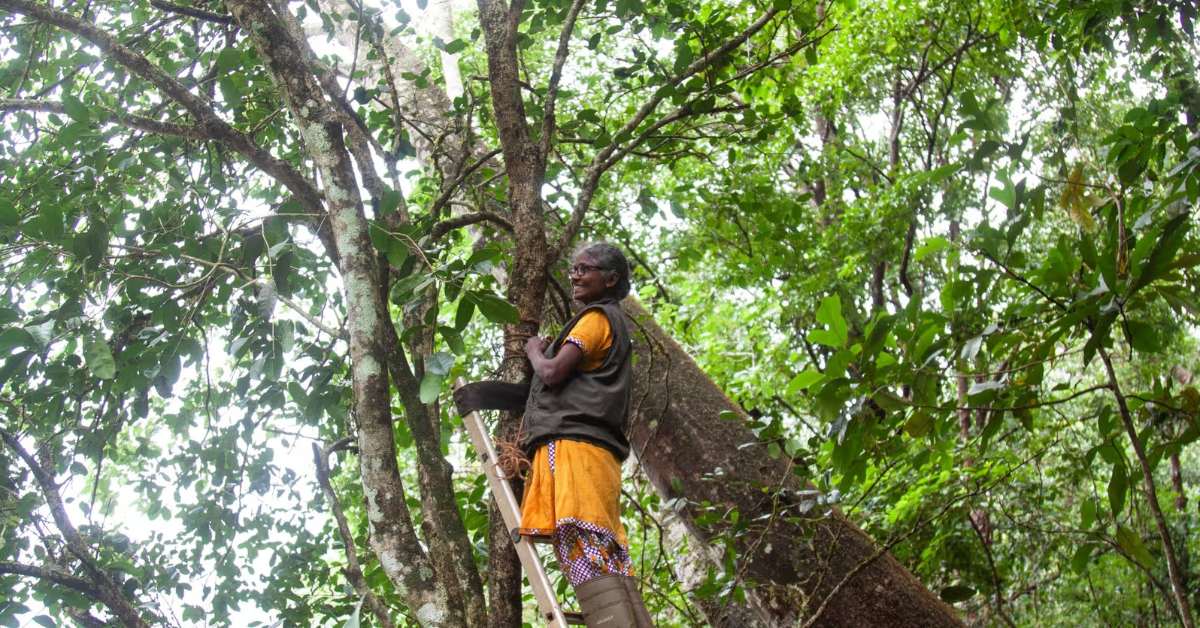 Local and Indigenous women in Kerala’s Western Ghats protect endangered species at Gurukula Botanical Sanctuary; Picture Source: The Guardian
Local and Indigenous women in Kerala’s Western Ghats protect endangered species at Gurukula Botanical Sanctuary; Picture Source: The Guardian
Today, the Gurukula Botanical Sanctuary spans 32 hectares, housing over 2,000 native plant species — and functioning as a refuge for nearly 40 percent of all plant species found in the Western Ghats.
A team grown from the land
Theuerkauf passed away in 2014, but before that, he mentored a group of 20 women — most of them local, some from Indigenous communities — who now lead the sanctuary’s conservation work.
These women aren’t trained botanists or scientists. They learned everything by working in the forest — by touching, transplanting, watching, and trying again. Their tools are not lab instruments but time, memory, and deep familiarity with their surroundings.
Laly Joseph, who now leads the plant conservation work, joined the sanctuary when she was just 19. “I was training to become an X-ray technician,” she said, “but I needed a job quickly. I liked working with plants, so I joined.” That was 37 years ago.
Learning without classrooms
The women of Gurukula have learned everything on the job — by observing, touching, failing, and trying again. They have become caretakers of some of the most delicate and endangered plants in the region: orchids, epiphytic ferns, Impatiens, succulents, carnivorous plants, and more.
 The Gurukula Botanical Sanctuary spans 32 hectares, housing over 2,000 native plant species; Picture source: The Guardian
The Gurukula Botanical Sanctuary spans 32 hectares, housing over 2,000 native plant species; Picture source: The Guardian
Many of these species are notoriously hard to grow outside their natural habitat. But today, the sanctuary is home to:
- Over 260 fern species, out of the 280 found in South India
- 110 of the 140 known Impatiens species in the region
- Rare plants like Impatiens jerdoniae, an epiphytic balsam that had almost vanished in the wild
- Around 100 native tree species, restored to their natural habitat
- 500 herbs, shrubs, creepers, climbers, and epiphytes
- Over 200 species of mosses and liverworts
The nursery and gardens sit beneath soaring rainforest trees, where greenhouses and open beds offer the right conditions for fragile species to take root again. Together, they’ve earned Gurukula the name ‘Noah’s Ark for plants’ — a living collection of rare and vanishing flora, kept safe until they can be reintroduced to the wild.
Under Laly Joseph’s guidance, the team has developed low-impact, careful methods of restoration. Their work blends traditional wisdom with hands-on experimentation. There are no fixed timelines or rigid systems — only close attention and care to what each plant needs.
Why this forest matters
The Western Ghats, a 1,600-kilometre mountain range stretching across southern India, is one of the world’s eight “hottest hotspots” of biodiversity, according to UNESCO. These ancient forests hold 27 percent of India’s higher plant species — a staggering number for a single region. Their streams and rivers sustain over 245 million people in South India, making the Ghats not just an ecological treasure, but a lifeline.
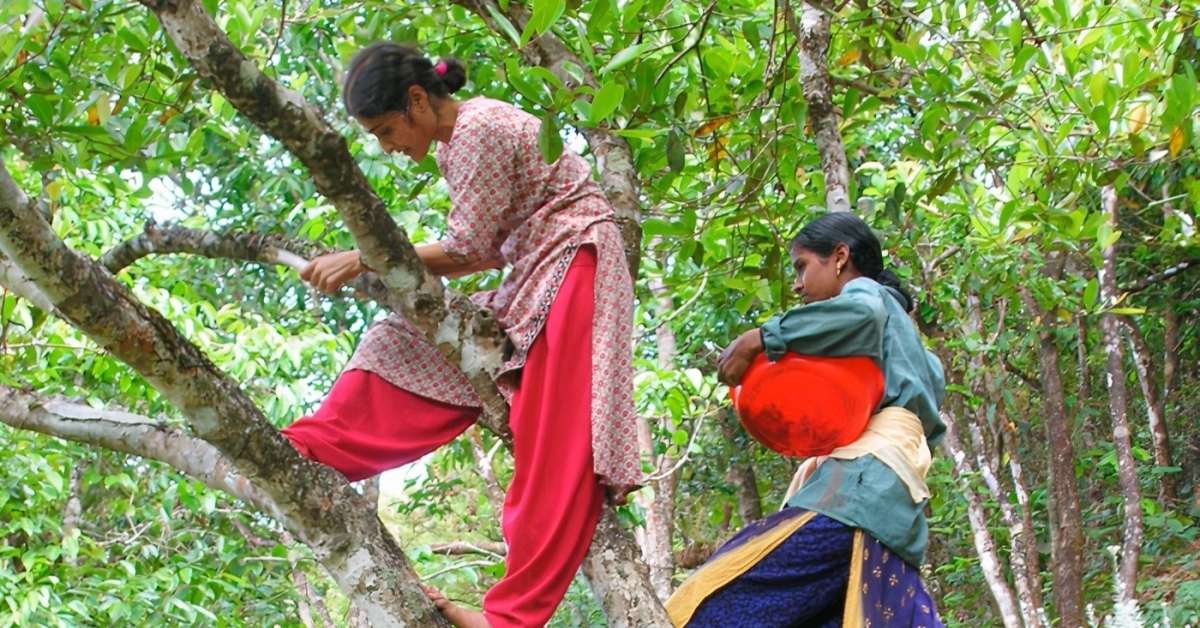 These women became forest experts by digging, planting, and never giving up; Picture source: The Guardian
These women became forest experts by digging, planting, and never giving up; Picture source: The Guardian
But the region is under constant threat — from urban expansion, mining, industrial activity, deforestation, and climate change. Most of its old-growth forest has already disappeared. Today, just seven percent remains under primary vegetation cover.
In this vast, fragile ecosystem, Gurukula is a stronghold — a space where rare plants are not just preserved, but allowed to live, multiply, and eventually return to the wild.
The plants that go unseen
While many climate strategies focus on planting trees, the team at Gurukula focuses on what usually disappears first — the herbaceous plants, the creepers, tubers, mosses, and small-rooted species that hold the ecosystem together.
These are the plants that die off quickly when forests are fragmented. And these are the ones the sanctuary is quietly bringing back, through a blend of in-situ and ex-situ conservation, propagation, and patient reintroduction.
In their care, forest restoration becomes a long, deliberate act — not just planting trees in rows, but rebuilding entire ecosystems from the ground up.
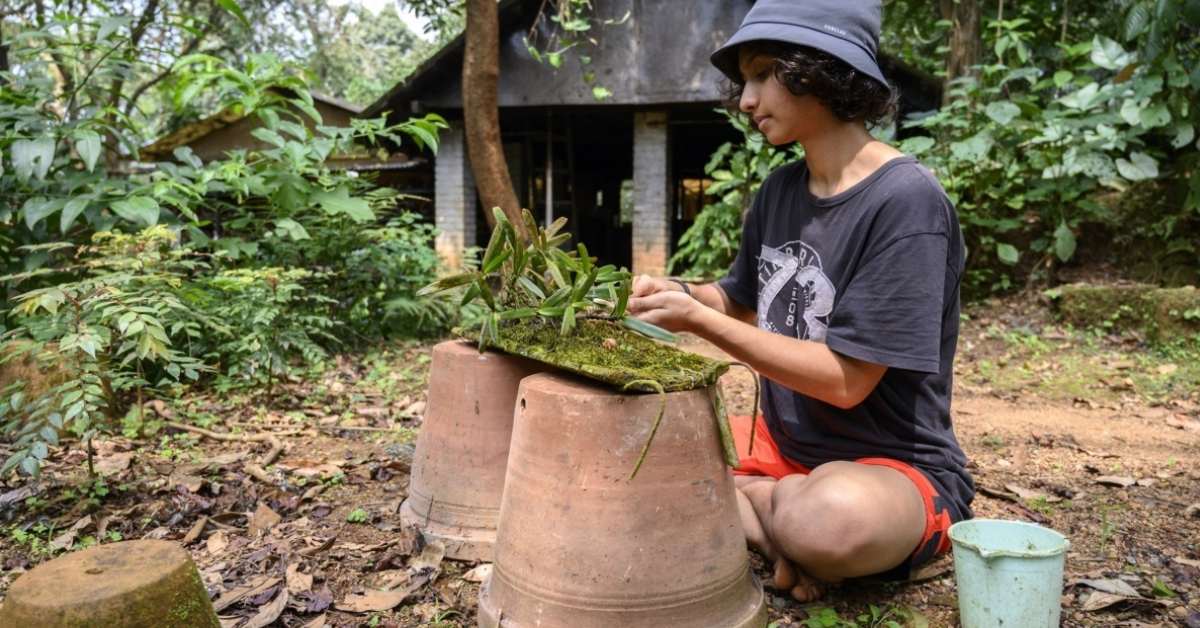 The team at Gurukula focuses on conserving what usually disappears first — the herbaceous plants, the creepers, tubers, mosses, and small-rooted species; Picture source: The Guardian
The team at Gurukula focuses on conserving what usually disappears first — the herbaceous plants, the creepers, tubers, mosses, and small-rooted species; Picture source: The Guardian
Letting the forest heal itself
Gurukula’s approach is rooted in a simple idea: don’t control the forest — support it. The team doesn’t force growth or manipulate nature. They create the right conditions, remove what harms, and then wait.
This method has become even more crucial as the Western Ghats face growing climate instability. By focusing on native species and encouraging natural succession, the sanctuary builds forests that are more resilient, more adaptive — and more alive.
As Laly put it, “Because of climate change and because the forest is disappearing, we are going to lose these plants. We can’t protect everything, but whatever we can, we are doing.”
The comeback you can count
The sanctuary’s efforts haven’t just revived plants. They’ve helped entire ecosystems find their way back.
As the forest has grown thicker, cooler, and more complex, animals have begun to return — sometimes in surprising numbers.
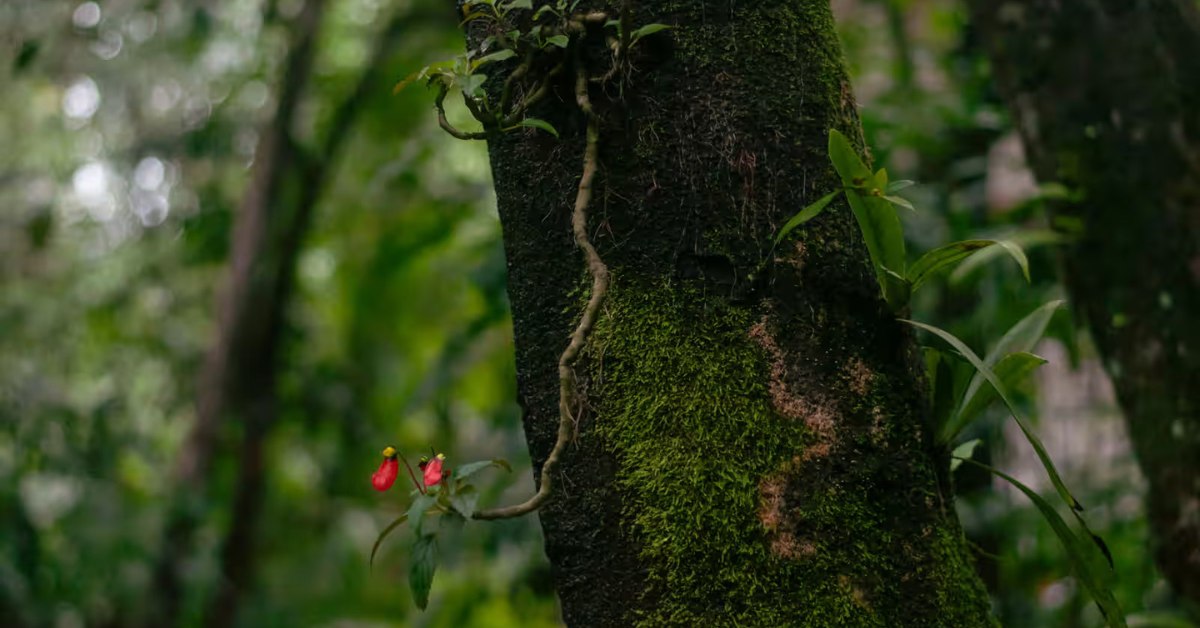 Gurukula’s approach is to expand the forest by creating supportive conditions and letting nature survive on its own terms; Picture source: The Guardian
Gurukula’s approach is to expand the forest by creating supportive conditions and letting nature survive on its own terms; Picture source: The Guardian
Today, the sanctuary is home to:
- 240 bird species
- 20 species of snakes
- 25 amphibian species
- 65+ butterfly species
- 15 small mammal species
- Deer, Indian bison, elephants, and signs of tigers, including tracks and scat
Every return — a bird, a frog, a pawprint — tells the team they are on the right path.
Legacy that lives in leaves
Theuerkauf may have passed away in 2014, but his legacy lives in every transplanted fern and shaded Impatiens.
Three plant species have been named after him in honour of his contributions to conservation.
Laly Joseph, once a young recruit in need of a job, is now an expert recognised in her own right. She has co-authored at least seven scientific papers describing newly discovered species — a remarkable feat for someone with no formal training.
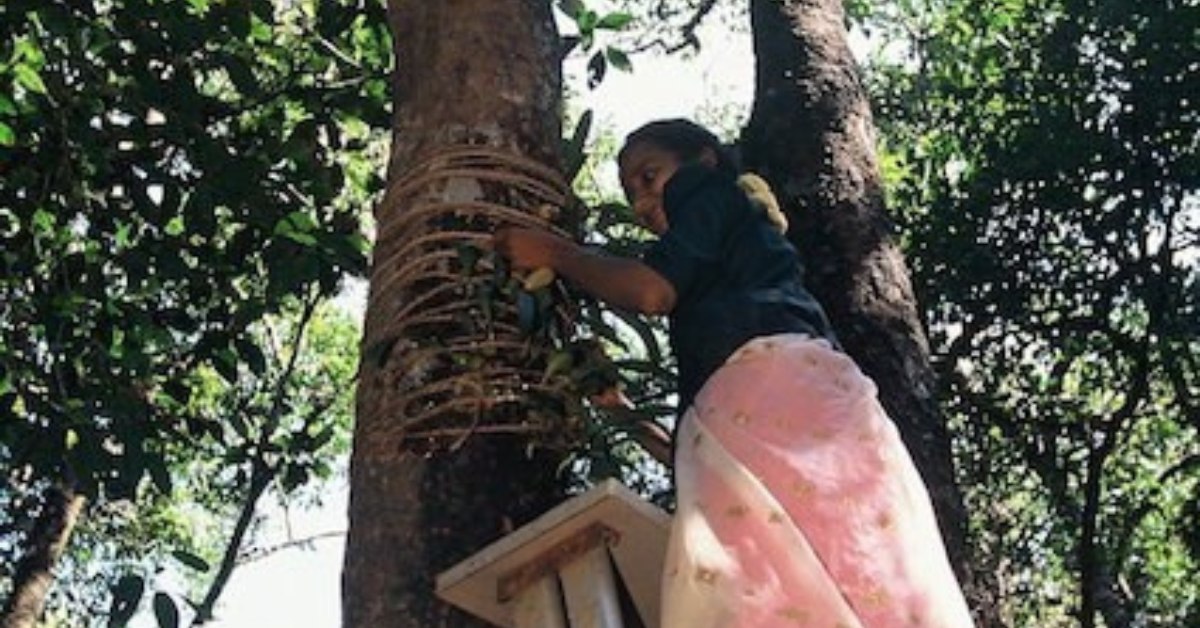 While restoration rushes for quick fixes, Gurukula’s women show true care by patiently nurturing the forest; Picture source: Rainforest Concern
While restoration rushes for quick fixes, Gurukula’s women show true care by patiently nurturing the forest; Picture source: Rainforest Concern
Her story is one of grounded leadership — the kind that grows silently, like roots under forest soil.
This is what care looks like
“Forests are substantially more than trees,” said Suprabha Seshan, an educator at the sanctuary. “There are 5,000 to 6,000 species of flowering plants in the Western Ghats, thousands of fungi, hundreds of mammals.”
She added, “Nature can come back. But only if we stop the processes of destruction. The modern industrial world isn’t stopping — it’s speeding up.”
In a time when restoration often means fast fixes, the women at Gurukula show what real care looks like. It looks like tending a nursery through a monsoon. Like tying an orchid to a tree. Like staying long enough to see the forest return — one species at a time.
Source:
News